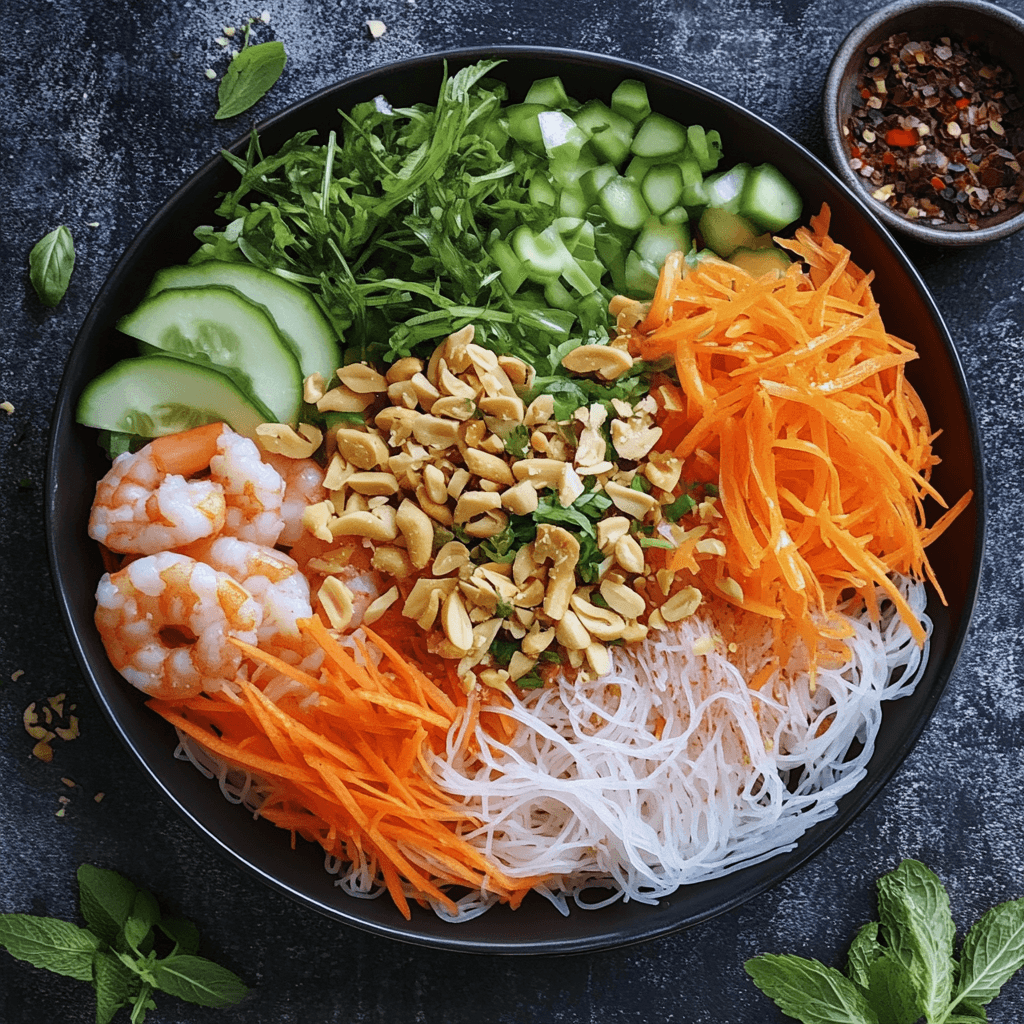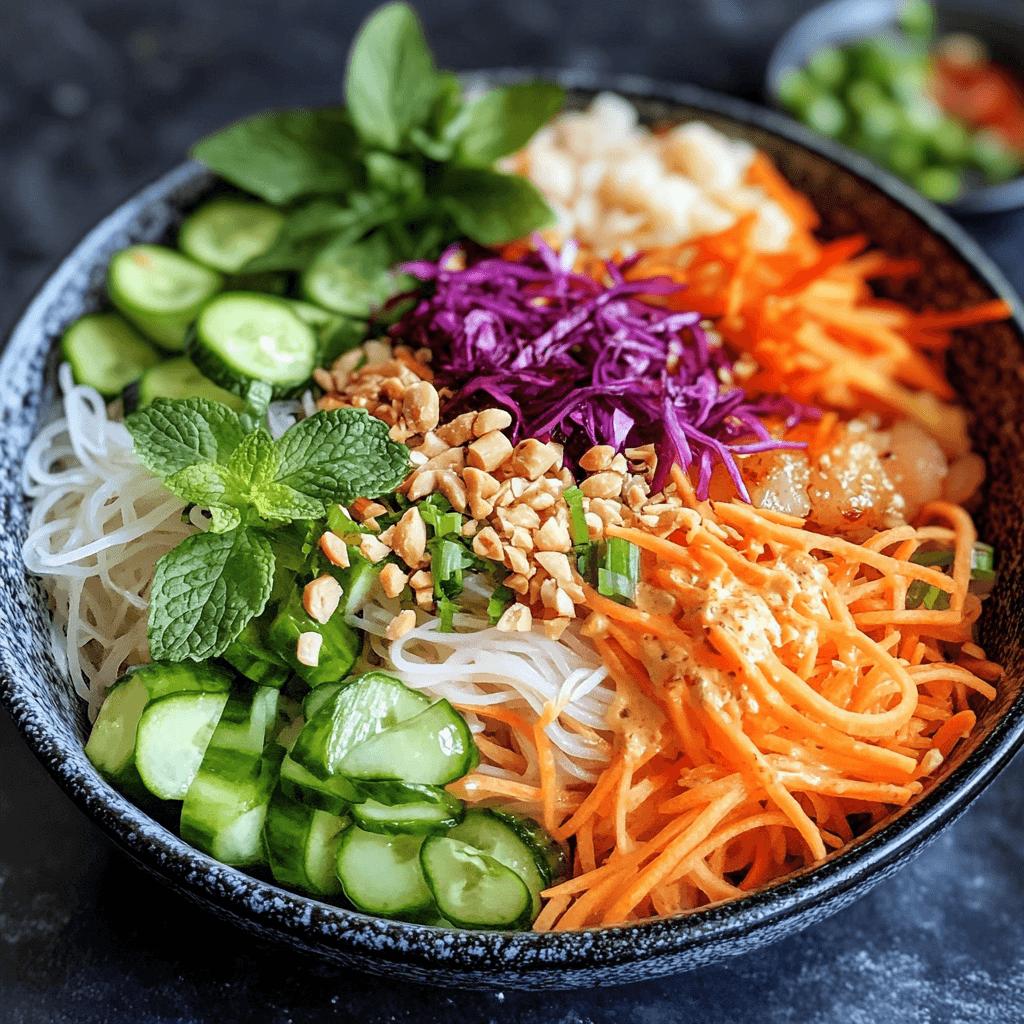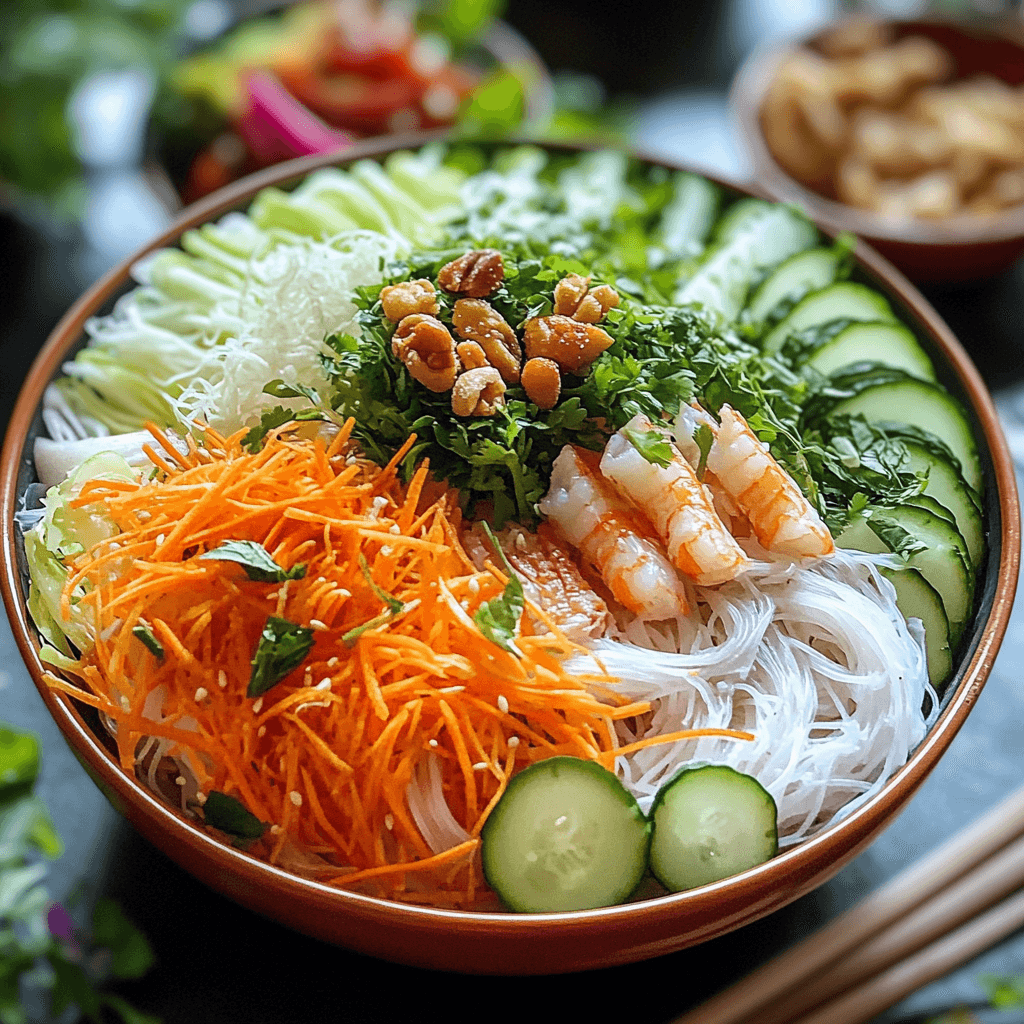Introduction to Vermicelli Noodles
Vermicelli Noodles are thin, long pasta strands made from either rice or wheat flour. They are a staple in many Asian, Mediterranean, and Indian cuisines because of their ability to absorb flavors and provide a light texture. Whether you’re whipping up a cold salad or a warm, hearty soup, you’ll find these noodles to be a versatile ingredient for various dishes.
In Vietnamese and Thai cooking, rice vermicelli commonly features in spring rolls and stir-fries. Additionally, if you’re curious about other types of noodles, check out this article on rice noodles for more information.
Types of Vermicelli Noodles
There are two main types of these noodles, each with its own distinct qualities:
- Rice Vermicelli: Made from rice flour, these gluten-free noodles are often used in Vietnamese and Thai dishes. They’re light and easy to digest.
- Wheat Vermicelli: Thicker and more substantial, this type contains gluten and is popular in Mediterranean and Middle Eastern dishes.
If you love trying out different noodle types, you might also enjoy experimenting with other creative dishes, like these fluffy strawberry pancakes.
Global Uses of Vermicelli
These noodles are widely used across the globe in different ways. For instance:
- Chinese Cuisine: Vermicelli often appears in soups and stir-fries, paired with meats and vegetables.
- Vietnamese Cuisine: Rice vermicelli plays a key role in dishes like Bun Cha and Pho, where it absorbs the flavors of the broth or sauce.
- Indian Cuisine: Vermicelli is not only used in sweet dishes like seviyan and kheer but also in savory meals like upma.
- Mediterranean Cuisine: Wheat vermicelli provides texture and bulk in stews and soups, making these meals more substantial.
How to Cook Vermicelli
Cooking these noodles is simple, but a few tips will help you get the best results:
- Boiling: First, bring water to a boil and add the noodles. Cook rice vermicelli for 2-3 minutes and wheat vermicelli slightly longer.
- Rinsing: After boiling, drain and rinse with cold water to prevent sticking.
- Tossing: Finally, toss the noodles in a bit of oil after rinsing to avoid clumping.
Popular Vermicelli Recipes
Here are some popular recipes that showcase the versatility of vermicelli:
- Singapore Noodles: A stir-fried dish featuring curry-flavored noodles, shrimp, and vegetables.
- Vietnamese Salad: A light, refreshing salad with vermicelli, herbs, and a tangy fish sauce dressing.
- Pad Thai: This Thai classic uses stir-fried rice noodles, peanuts, and tamarind-based sauce.
For more noodle inspiration, check out this recipe for a Vietnamese noodle salad.
Nutritional Benefits

Including vermicelli in a healthy, balanced diet is easy. Specifically:
- Rice Vermicelli: Gluten-free, low in fat and sodium, rice vermicelli is a great option for those with gluten sensitivities.
- Wheat Vermicelli: Higher in protein and slightly more nutrient-dense, wheat vermicelli is a good alternative, although not suitable for gluten-free diets.
Frequently Asked Questions (FAQs)
What is the difference between rice noodles and vermicelli?
Rice noodles are flat and wide, while rice vermicelli is round and thin. Both are made from rice flour but differ in texture and cooking time.
Are vermicelli noodles gluten-free?
Rice vermicelli is gluten-free, but wheat vermicelli contains gluten.
How do I prevent clumping?
To prevent clumping, rinse the noodles immediately after cooking with cold water and toss them with a bit of oil.
Can I use vermicelli instead of spaghetti?
Yes, but keep in mind that vermicelli is much thinner and will cook faster than spaghetti.
What are the health benefits of vermicelli noodles?
These noodles are low in fat and sodium. When paired with vegetables and lean proteins, they can be part of a balanced diet.
Vegetarian and Vegan Dishes
Vermicelli is a fantastic option for vegetarian and vegan meals. Here are some ideas:
- Vegan Stir-Fry: Toss noodles with stir-fried tofu, broccoli, and carrots for a healthy dish.
- Cold Noodle Salad: Mix vermicelli with fresh herbs, cucumber, and a light dressing for a refreshing meal.
- Vegan Soup: Alternatively, use the noodles in a simple vegetable broth with mushrooms and greens.
For more vegetarian ideas, you can check out this guide to vegan stir-fries.
Creative Ways to Serve Vermicelli
Here are some creative ways to incorporate vermicelli into your meals:
- Cold Noodle Salad: Combine noodles with crunchy vegetables and a citrus dressing for a light meal.
- Spring Rolls: Use vermicelli as a base in fresh spring rolls, paired with shrimp and herbs.
- Fusion Dishes: Experiment with these noodles by incorporating them into fusion dishes like noodle tacos or stir-fries.

Storing and Reheating
To store and reheat vermicelli properly:
- Storing: Keep cooked noodles in an airtight container in the fridge for up to 3 days.
- Reheating: Briefly place them in hot water or stir-fry for a couple of minutes to reheat. Avoid microwaving to maintain their texture.
By incorporating these noodles into your meals, you can create a wide variety of dishes. Whether in soups, salads, or stir-fries, vermicelli offers endless possibilities for creativity in the kitchen. For more inspiration, explore other noodle dishes to enhance your cooking experience.


1 thought on “Vermicelli Noodles: A Complete Guide”